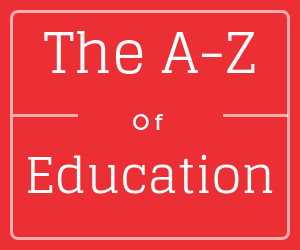What is Guided Writing?

Guided Writing is a teaching approach that allows children of similar abilities to write together in a small group in the style of a mini-lesson. Guided writing is a similar activity to shared writing. Still, it is a step towards writing completely independently, as children are encouraged to take on individual projects that will provide valuable practice and enhance their skills.
Guided writing works well for just about any writing session with children of all ages and abilities. The approach offers children additional guidance, as you might expect, and gives teachers and parents more opportunities to track learners’ progress. In addition, children receive instant feedback on their writing, giving them more chances to improve their work proactively.
Guided writing works by the teacher clarifies what they’d like children to do in their paper more clearly. It also gives teachers and learners a chance to have a more open discussion about how children are writing and any stumbling blocks they want to tackle. Finally, it’s the perfect time for
Unlike Shared Writing, it’s a good idea for children to write independently while still a part of their small group. This will help them feel more confident, but it also means that the teacher is right there with them to offer any help that might be needed along the way. This direct, first-hand guidance is why Guided Writing is such an effective method. A child who benefits from this might otherwise stay stuck for the rest of the task or be left waiting while the teacher attends to other children. In addition, in a quieter environment with more of the teacher’s attention, children can get over any blockers much faster and more effectively, so they can learn more quickly.
Guided writing activities also help teachers to monitor progress and see the child’s way of working first-hand, away from the hustle and bustle of the classroom. Every child has a unique way of learning and writing, so this opportunity for specific guidance is valuable!
Continue reading to learn more about how Guided Writing works, its benefits, and some resources to help you implement this method into your teaching.
Benefits of Guided Writing
Guided writing offers many benefits for children who lack confidence in their writing. Here are a few to remember if you consider using this method in your classroom!
- Immediate feedback and guidance: The number one benefit of the guided writing approach is that teachers can give instant feedback to children, which is unique to them! If children have someone on hand to help right away, they’re more likely to work through any problems they’re having with their writing. It’s helpful for teachers, too, as they can monitor any recurring blockers that are coming up for a particular child.
- Peer support: This is particularly important, as, with guided writing, children are grouped according to their abilities. Knowing this will give children confidence and a sense of belonging in a smaller group with others who might experience similar challenges with their writing.
- A more focused working environment: Where possible, smaller groups are often beneficial for any learning! Distractions are minimized, and teachers have more time to offer their children to attend. Any creative or otherwise writing needs a lot of focus from children, so this point is a win!
- Space for inspiring discussion: Whole-class discussions are wonderful, of course, but it’s almost impossible for everyone always to be heard! With guided learning, each child can discuss with their peers any tips that help them or obstacles they want to work on. It’s also a great way for the teacher to give writing prompts and talk more in-depth about the writing task!
- Time to share: Last but certainly not least, guided writing encourages children to share their work with their teacher and peers in a more comfortable setting. This helps the teacher keep track of their child’s good work. It also means that children can see how their peers are doing, be guided by their example, and feel reassured that they’re doing a good job!
How to practice Guided Writing in the classroom:
One of the great things about Guided Writing as a method is that it’s really simple to do!
To start, it’s a good idea to do some writing in class before you plan to try out Guided Writing. This will mean you’ll have an up-to-date paper to help assign children to the right groups. Children of similar abilities must be put into the same groups- this will make the activity work best!
Once you’ve got your groups, it’s time to start! Guided Writing works as a great activity with small groups during an English lesson or any subject where you’re doing a piece of writing. Start by explaining the group session’s purpose and why the children have been grouped. This will mean that children understand the task and assure them they’re there for a positive reason!
It might be a nice idea to start an open discussion where children explain any challenges they have with their writing. This will allow you to see where each child is at with their learning. It also encourages peer support, as each child will know they’re not the only one facing certain obstacles!
Keeping this discussion in mind, the next thing to do would be to present the task and give tailored prompts to each child to help them tackle their challenge. Prompts could include a topic for them to have, sentence starters, open-ended questions for them to answer, and anything else you think would be helpful!
Each child must have something individual to work on within the activity. The aim of Guided Writing is that children create their unique work as they normally would, but with tailored guidance. For example, if the topic were a Summer Holiday Diary Entry, each child would write one but would work on improving aspects of writing that they struggle with.
While children are working, it’s a good idea to ask them to work silently. That way, you can work your way around the group and offer each child help where they need it without distractions. This is the most important aspect of Guided Writing and will hopefully help you see a difference in your children’s writing!
Once you’ve advised each child, it’s important to give feedback. Some teachers might encourage children to share their work with the rest of the group, but this is optional. What’s important is that you end the session with some updated work from your child and give them some targets to work on for next time!






